British Food, a culinary tapestry woven from tradition and innovation, offers a delightful experience for food enthusiasts. At larosafoods.com, we celebrate the rich heritage and modern interpretations of British cuisine, providing you with an extensive collection of recipes and culinary insights. Discover how larosafoods.com can help you explore classic British dishes and unlock a world of gastronomic delights. From hearty meals to delicate pastries, dive into the unique flavors that define British gastronomy, from fish and chips to the full English breakfast, and beyond.
1. What Makes Fish And Chips A Quintessential British Food?
Fish and chips is undoubtedly a British staple, arguably even its national dish, instantly recognizable as a symbol of traditional British fare.
The first recorded fish and chip shop opened in London in 1860, established by Joseph Malin. Since then, its popularity has soared, with approximately 10,500 fish and chip shops currently operating in the UK. These establishments, often referred to as “chippies,” offer a variety of fish, with cod being the most popular choice. The fish is battered and deep-fried to a golden brown, crispy perfection, and traditionally served with thick-cut, deep-fried chips and mushy peas.
A visit to a chip shop counter typically reveals malt vinegar and salt, essential condiments for enhancing the flavor of your fish and chips. While fish and chips remain the main attraction, alternatives such as sausages or plant-based options are available. It’s common to enjoy this meal on a Friday night, a perfect way to unwind after a long week. Coastal regions are particularly popular spots for savoring this iconic dish.
Fun Fact: Until the 1980s, fish and chips were traditionally served wrapped in newspaper; today, they are more commonly served in containers.
2. What’s So Special About The British Sunday Roast?
The Sunday roast is more than a meal; it’s a comforting embrace, a cornerstone of British culinary tradition, and a symbol of family togetherness.
Typically, the Sunday roast features a roasted joint of meat, such as beef, chicken, pork, or lamb, cooked alongside potatoes in the oven until perfectly tender. Roast potatoes are incredibly popular, although some prefer mashed potatoes, a less common choice. The meal is complemented by an array of vegetables, including carrots, parsnips, or tenderstem broccoli, as well as Yorkshire pudding, a crucial element of the roast. Originating from Yorkshire, this savory pudding is circular with a hollow center, often used to hold the entire roast dinner.
No Sunday roast is complete without gravy, usually made from meat juices and other ingredients, poured generously over the meat and vegetables. Mint sauce is a classic accompaniment to roast lamb, enhancing its flavor profile. This meal is traditionally served on Sundays, hence the name, and is often enjoyed with family at home or in a traditional British pub.
Fun Fact: The British tradition of the Sunday roast is believed to have originated during the reign of Henry VII. Legend has it that he ate roast beef every Sunday and provided it to his guards, giving rise to the term “beefeaters,” referring to the guards at the Tower of London.
3. What Does A Traditional English Breakfast Consist Of?
The English breakfast, often referred to as a “fry-up,” is a substantial meal that can easily replace lunch, though it’s not exactly a health food.
A typical English breakfast includes fried eggs, bacon, sausages, baked beans, fried tomatoes, and mushrooms. Buttered toast or deep-fried bread is also commonly included to soak up the juices and bean sauce. For the more adventurous, black pudding, made from blood, fat, and oatmeal, is an option. Beverages such as orange juice and English breakfast tea are the preferred choices, while tomato ketchup and brown sauce, known for its tangy flavor, are served with the meat.
While easy to prepare at home with supermarket ingredients, local eateries also offer this meal. Typically eaten on weekends or special occasions, the English breakfast is not an everyday meal due to its richness.
Fun Fact: Due to shortages and rations, the English breakfast was rarely consumed during World War II.
4. What Makes Shepherd’s Pie So Comforting?
Shepherd’s pie is a comforting British dish, ideal for a cold winter’s day, consisting of two main layers.
Despite its name, shepherd’s pie doesn’t actually contain shepherds. Instead, it’s named for the minced lamb used in the bottom layer, as shepherds are known for herding sheep. The top layer consists of creamy mashed potatoes. The pie is baked until the mashed potato is golden and the minced lamb is bubbling. Garden peas are a common side dish, and the pie is best enjoyed homemade or at a British pub.
Fun Fact: Meat-free versions of shepherd’s pie are often called “shepherdless” pie by vegetarians and vegans.
5. What Is The Difference Between Cottage Pie And Shepherd’s Pie?
Cottage pie and shepherd’s pie are both comforting dishes featuring a delightful combination of minced meat and potatoes.
The key distinction lies in the type of meat used: cottage pie is made with minced beef, whereas shepherd’s pie uses minced lamb. Both pies are prepared and served in a similar manner, with a topping of golden mashed potatoes.
Fun Fact: The term “cottage pie” was first used in the late 18th century.
6. What Exactly Is Toad In The Hole?
Toad in the hole is a traditional dish that first appeared in print in the 17th century, although its exact origins remain unknown.
This dish combines sausages with Yorkshire pudding batter and is typically served with gravy and vegetables such as peas or mashed potatoes. Sausages take center stage, with Yorkshire pudding batter poured over them before being baked in the oven to create a pie-like dish. Similar to shepherd’s pie and cottage pie, toad in the hole is best enjoyed on a cold winter’s day, either at a British pub or at home.
Fun Fact: Historically, steak, rather than sausages, was used in toad in the hole.
7. Why Is Bangers And Mash Considered A Comfort Food?
Bangers and mash is a simple yet satisfying meal that highlights the importance of sausages and potatoes in British cuisine.
“Bangers” is a common British term for sausages. This dish is served with gravy and peas and is best enjoyed at home or in a pub. In 2009, the TV channel Good Food voted it as the most comforting meal, thanks to its melt-in-the-mouth mashed potatoes and sizzling sausages.
Fun Fact: The term “bangers” for sausages supposedly originated during World War I when sausages were filled with water due to rationing, causing them to explode during cooking, similar to fireworks.
8. What Are The Origins Of Pie, Mash, And Liquor?
Pie, mash, and liquor is a traditional working-class meal originating from the docks of London and dating back over 100 years.
The pie, made with shortcrust pastry and filled with minced beef, is served with mashed potatoes. Instead of gravy, a parsley-based sauce called liquor is poured over the plate. For an authentic experience, visit a pie and mash shop in the East End of London, where this classic British dish is traditionally served.
Fun Fact: Originally, the pies were filled with eels, rather than minced beef, due to the abundance of eels in the River Thames.
9. What Makes British Sandwiches Unique?
While sandwiches are common worldwide, British sandwiches offer a distinct culinary experience with unique flavor combinations.
Popular fillings include cheese and pickle, cheese and tomato, ham and pickle, ham and coleslaw, ham and cucumber, tuna mayonnaise, egg mayonnaise, and coronation chicken, a mix of chicken, sultanas, spices, and mayonnaise or crème fraiche. These sandwiches are a staple for school children and working adults, especially at lunchtime. Adding walkers’ original crisps to the sandwich provides an extra British touch.
Fun Fact: The term “butty” is sometimes used instead of “sandwich” in the UK. A popular example is the “chip butty,” found in chip shops.
10. Why Is Beans On Toast Considered A Versatile Meal?
Beans on toast is a remarkably versatile dish that can be enjoyed at any time of day.
To achieve the best results, generously butter the toast before topping it with hot baked beans. For added flavor, grate some cheddar cheese on top and allow it to melt. This meal is often eaten for breakfast, lunch, or dinner, and is particularly popular among students or those in a hurry.
Fun Fact: Fortnum and Mason, a luxury UK store, was the first retailer in the UK to sell Heinz baked beans.
11. How Are Crumpets Best Enjoyed?
Crumpets, a breakfast staple, are enhanced by the simple addition of butter.
These small, circular treats have a spongy texture and distinctive holes. Typically cooked in a toaster for three minutes, crumpets are best enjoyed with a generous spread of butter, allowing it to melt into the holes. Every bite offers a burst of buttery flavor. Similar to a full English breakfast, crumpets are often eaten at home on weekends with a cup of tea.
Fun Fact: The earliest recorded mention of crumpets dates back to 1365.
12. What Is Included In A Traditional English Afternoon Tea?
English afternoon tea is a cherished tradition, often enjoyed on special occasions as a delightful treat.
Afternoon tea features a tiered platter filled with quartered sandwiches, a variety of cakes, and authentic British scones served with clotted cream and strawberry jam. Clotted cream, a thick cream made by heating full-cream cow’s milk with steam, is particularly popular in the South West of England and has a high-fat content. A pot of tea accompanies the platter, and it is traditionally served around 4 pm.
Fun Fact: Duchess Anna of Bedford founded afternoon tea in 1840.
13. What Makes Crumble A Classic British Dessert?
Crumble is a beloved British dessert consisting of fruit tossed in cinnamon and sugar, topped with a crumbly pastry, and baked to perfection.
The classic version features apples, but apple and rhubarb or apple and blackberry combinations are equally popular. It is typically served with custard or cream and is often enjoyed after a roast dinner.
Fun Fact: Crumbles gained popularity during World War II as an alternative to pies due to rationing.
14. What Are The Layers In A Traditional Trifle?
Trifle is a complex English dessert with multiple layers of ingredients.
The first layer usually consists of sponge fingers soaked in sherry, followed by fruit jelly (typically strawberry), custard, and whipped cream. These layers are repeated until the bowl is full, with whipped cream always topping the dessert. Trifle is a cold dessert that requires no baking and is traditionally served in the summer.
Fun Fact: The name “trifle” comes from the Old French word “trufe,” meaning of little importance.
15. What Is A Scotch Egg And How Is It Made?
Scotch egg is a popular British snack, particularly appealing to egg lovers.
It consists of a boiled egg wrapped in sausage meat, coated in breadcrumbs, and then deep-fried. These are commonly served in pubs. For the best scotch egg, ensure the yolk is runny.
Fun Fact: The origins of the scotch egg are uncertain, but it is believed to have originated in Whitby, Yorkshire.
16. What Are Some Other Popular British Foods?
In addition to the dishes listed, other notable British foods include sticky toffee pudding and pork pie.
Sticky toffee pudding is a rich, sweet dessert served hot with ice cream. Pork pie, made with hot water crust pastry and filled with pork, is a popular snack.
17. What Are The Regional Variations In British Cuisine?
British cuisine is incredibly diverse, with regional specialties that reflect local ingredients and culinary traditions. For example, Cornwall is famous for its pasties, savory pastries filled with meat and vegetables, while Lancashire is known for its hotpot, a hearty stew of lamb and potatoes. Scotland boasts haggis, a savory pudding containing sheep’s pluck, and Wales offers Welsh rarebit, a cheese sauce served over toast. These regional dishes showcase the breadth and depth of British culinary heritage.
| Region | Signature Dish | Description |
|---|---|---|
| Cornwall | Cornish Pasty | Savory pastry filled with meat and vegetables |
| Lancashire | Lancashire Hotpot | Hearty stew of lamb and potatoes |
| Scotland | Haggis | Savory pudding containing sheep’s pluck (heart, liver, and lungs) |
| Wales | Welsh Rarebit | Cheese sauce served over toast |
| Yorkshire | Yorkshire Pudding | Baked pudding made from batter, typically served with roast dinners |
| Melton Mowbray | Melton Mowbray Pork Pie | A traditional English pork pie made with uncured pork and a rich pastry crust |

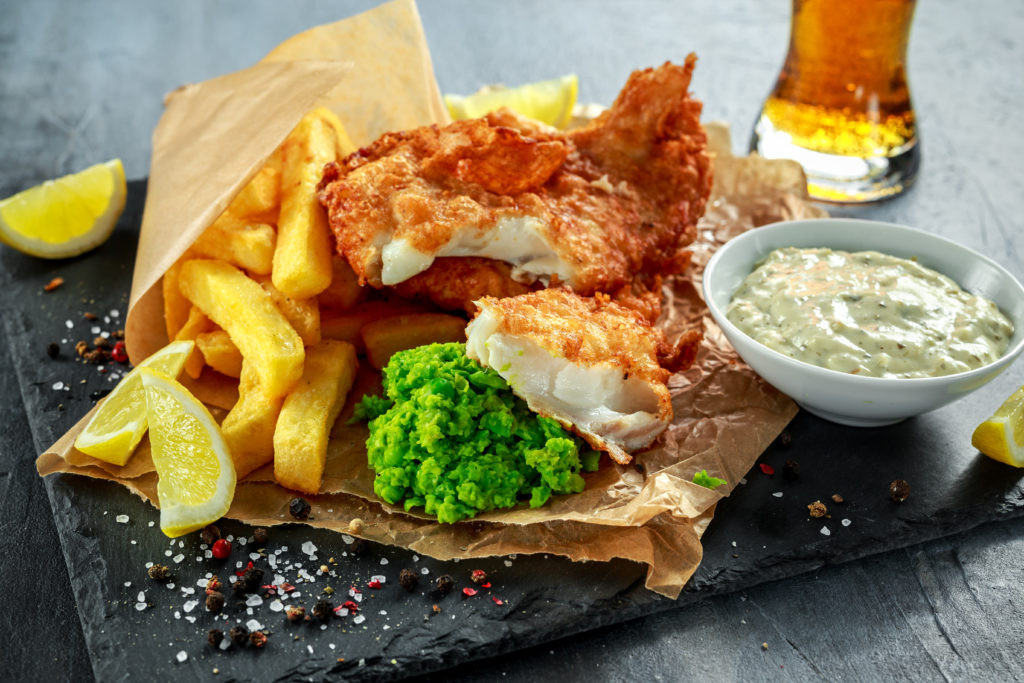
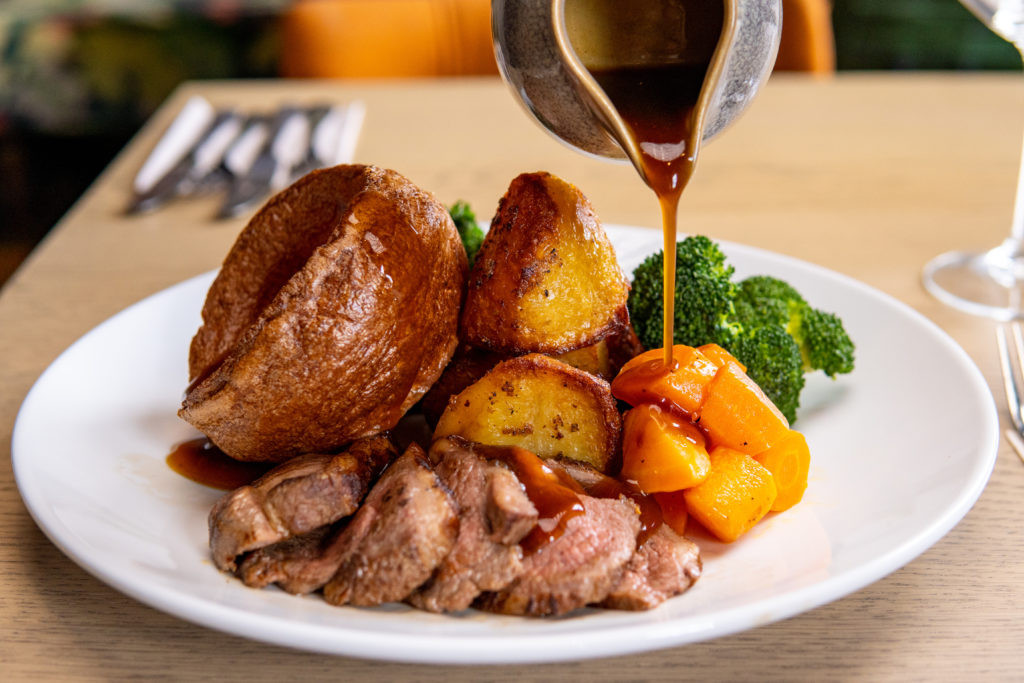
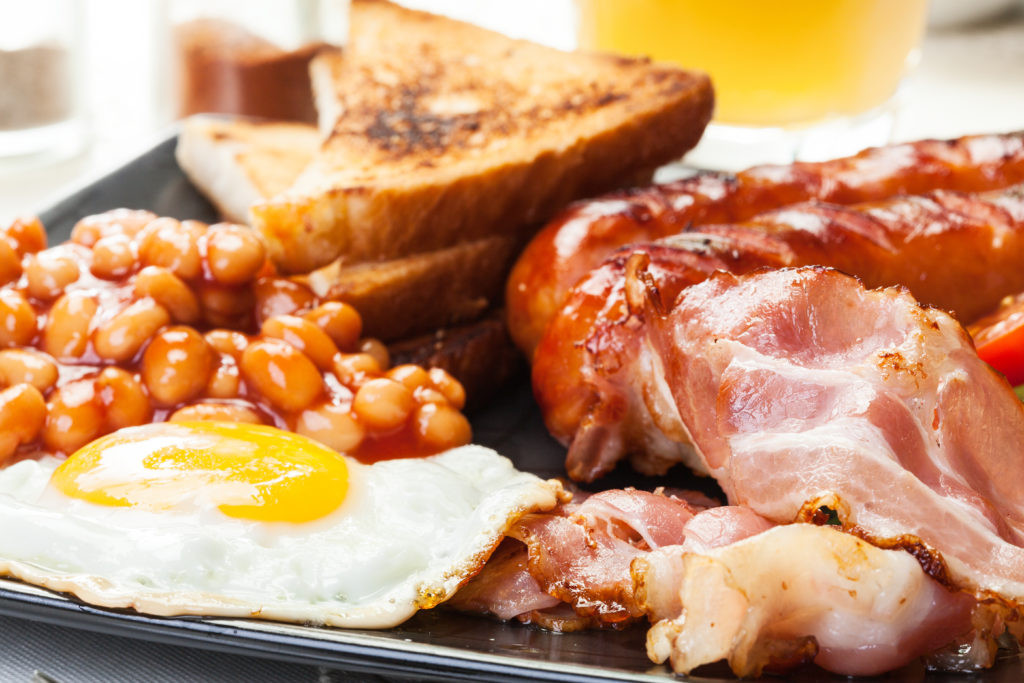
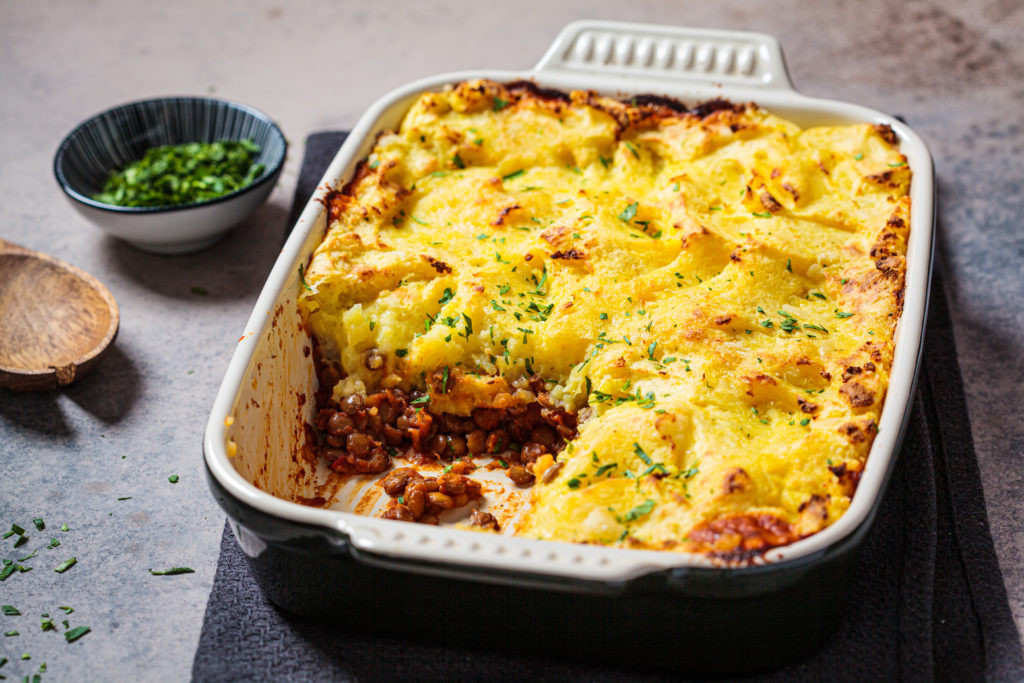
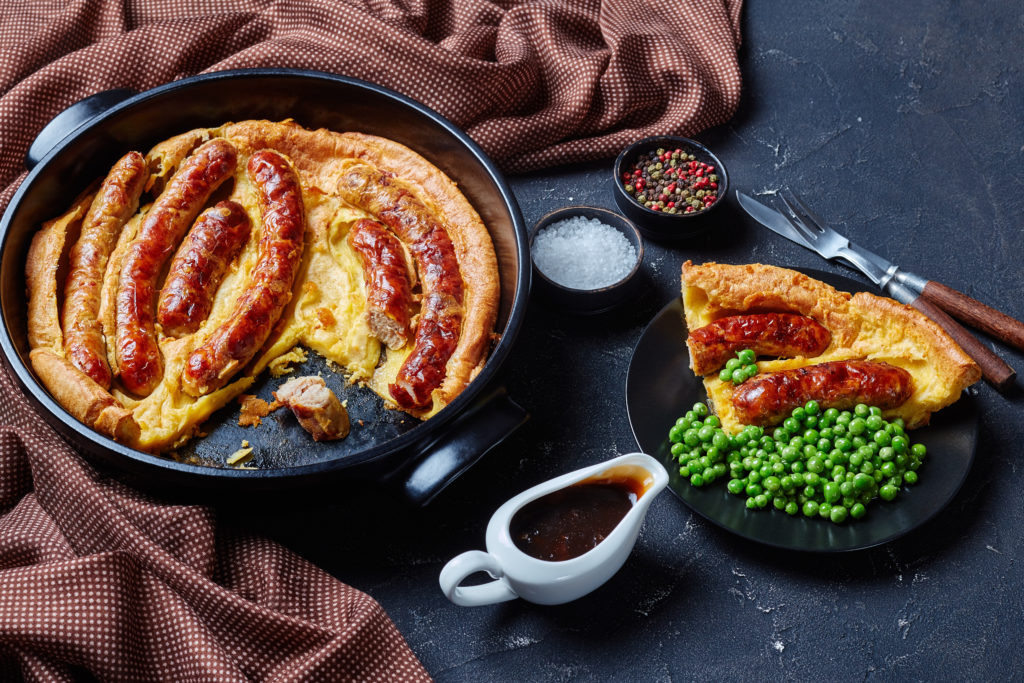
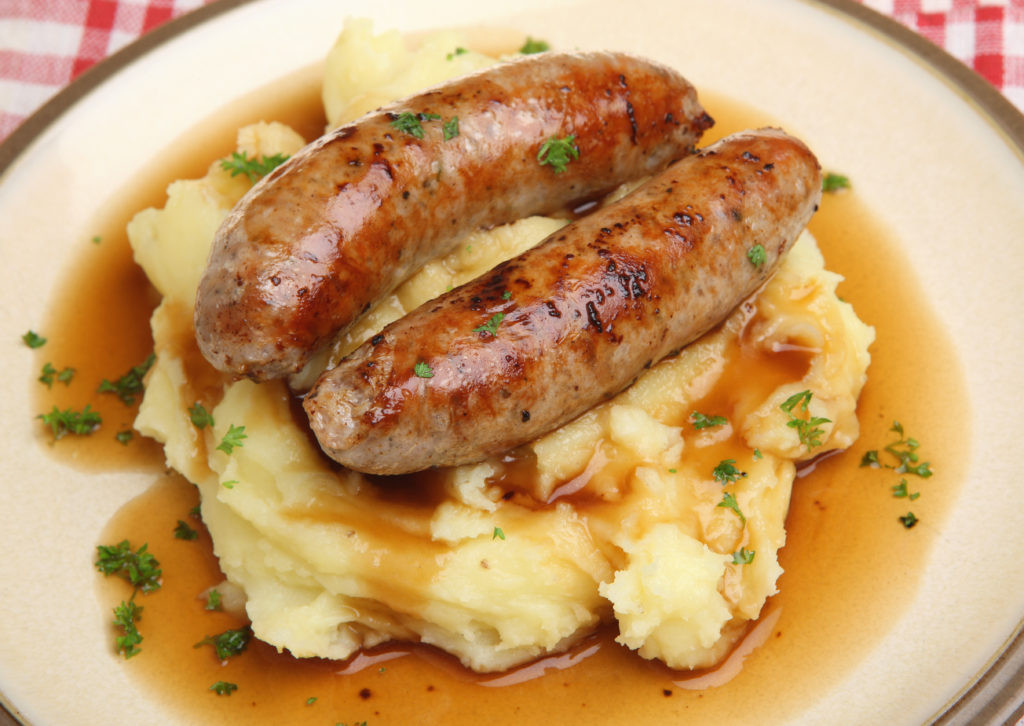
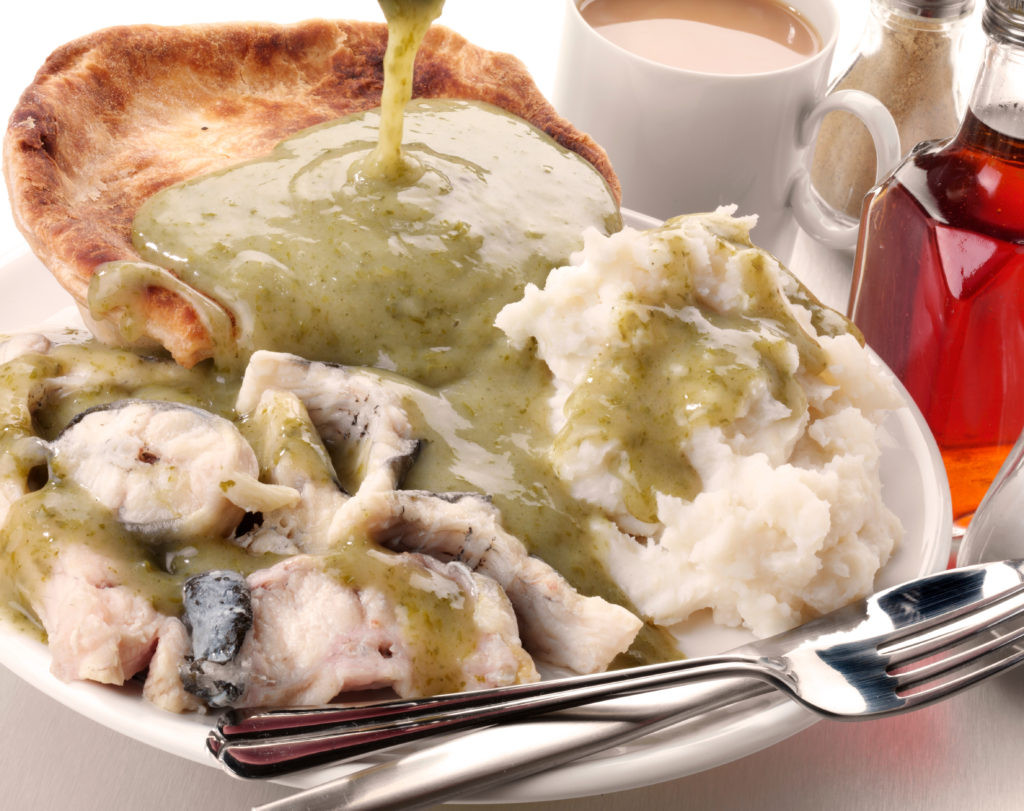

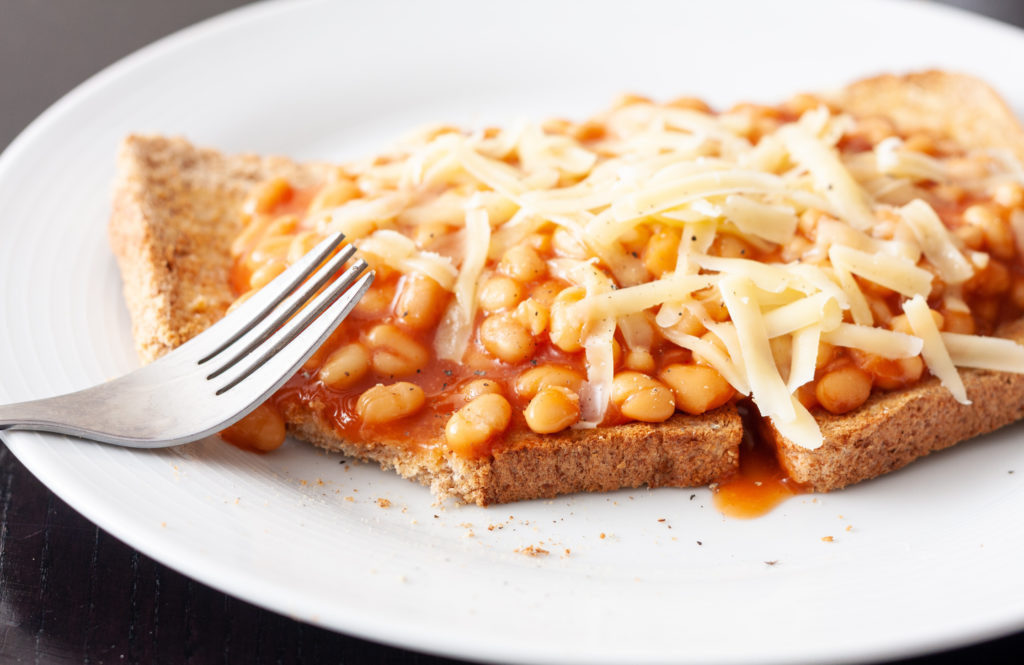

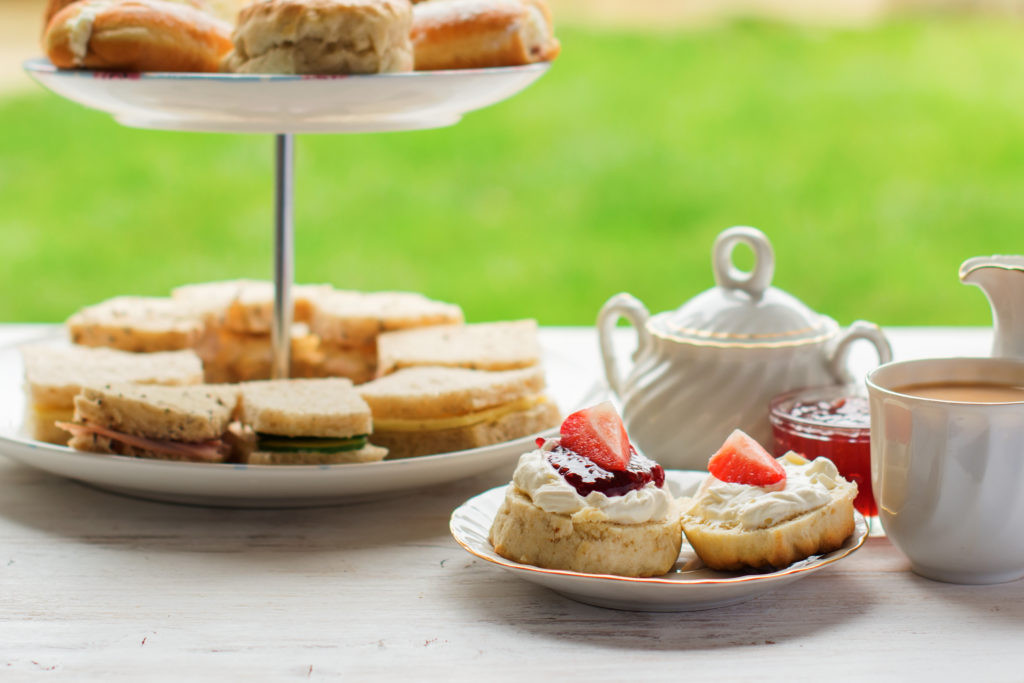
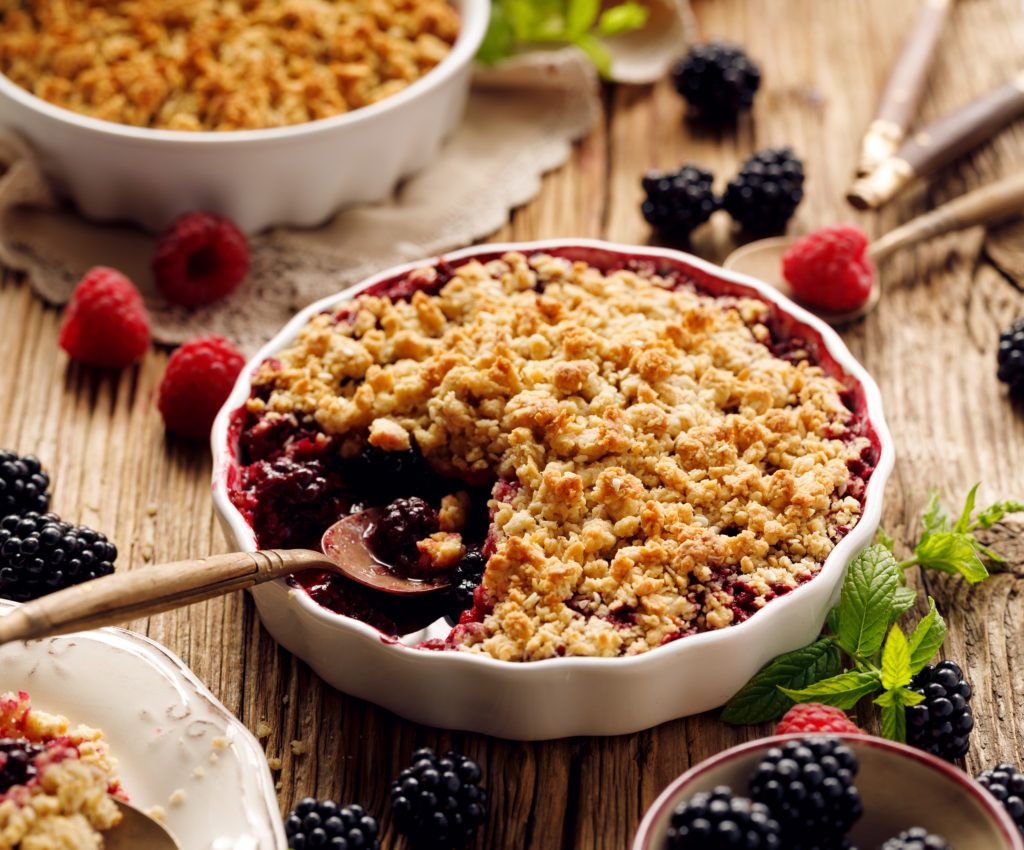

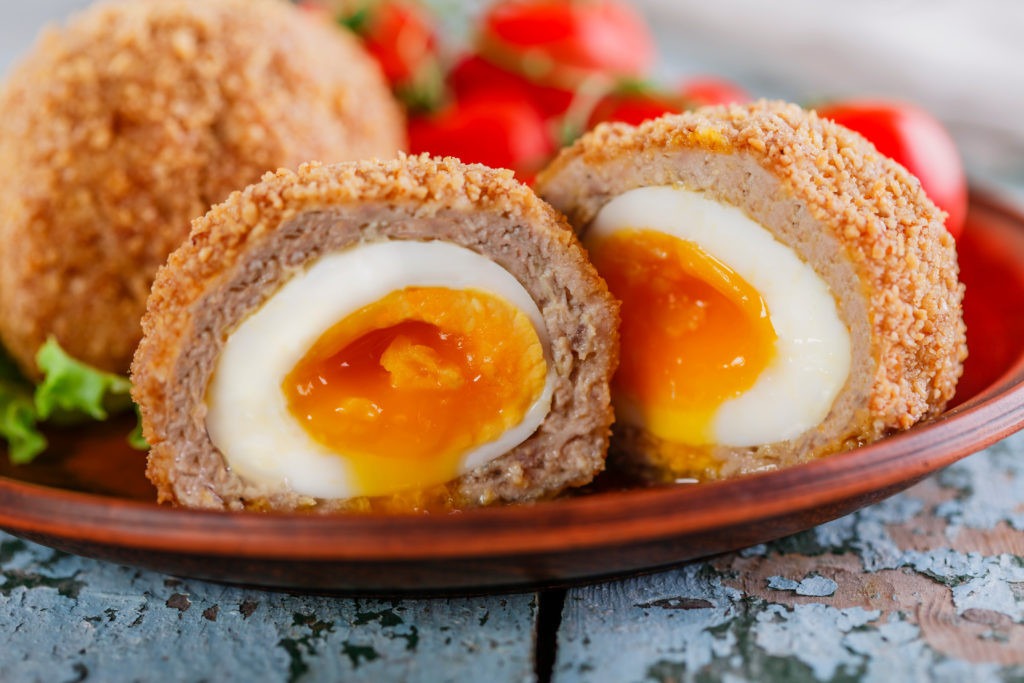
Exploring these regional variations allows you to experience the full spectrum of flavors that British cuisine has to offer.
18. How Has Modern British Food Evolved?
Modern British food has evolved significantly, blending traditional dishes with contemporary techniques and global influences. Chefs like Jamie Oliver and Heston Blumenthal have played a crucial role in this transformation, emphasizing fresh, local ingredients and innovative cooking methods. Many modern British restaurants now offer lighter, healthier versions of classic dishes, catering to evolving tastes and dietary preferences. This evolution ensures that British cuisine remains relevant and exciting for both locals and international visitors.
- Emphasis on Local Ingredients: Modern British chefs prioritize using locally sourced, seasonal produce to create dishes that are both fresh and sustainable.
- Fusion Cuisine: British cuisine has embraced global flavors, incorporating elements from Indian, Asian, and Mediterranean cooking.
- Healthier Options: Many restaurants now offer lighter versions of classic dishes, accommodating dietary restrictions and health-conscious diners.
- Innovative Techniques: Chefs are experimenting with molecular gastronomy and other advanced techniques to elevate traditional recipes.
19. What Are Some Popular British Street Foods?
British street food has experienced a renaissance in recent years, with food markets and pop-up stalls offering a diverse range of delicious and innovative options. Some popular choices include:
- Fish and Chips: The classic takeaway meal remains a firm favorite, often served with a variety of sauces and toppings.
- Scotch Eggs: A perfect on-the-go snack, scotch eggs are boiled eggs wrapped in sausage meat, breaded, and deep-fried.
- Pies: From traditional meat pies to vegetarian options, pies are a staple of British street food.
- Hog Roast: A succulent roasted pig, served in a bun with apple sauce and stuffing, is a must-try at many food markets.
- Yorkshire Pudding Wraps: Roast dinner ingredients wrapped in a giant Yorkshire pudding offer a unique and satisfying street food experience.
| Street Food | Description |
|---|---|
| Fish and Chips | Deep-fried fish served with thick-cut chips, often with vinegar and salt |
| Scotch Eggs | Boiled egg wrapped in sausage meat, breaded and deep-fried |
| Pies | Savory pies with various fillings, such as meat, vegetables, or cheese |
| Hog Roast | Roasted pig served in a bun with apple sauce and stuffing |
| Yorkshire Pudding Wrap | Roast dinner ingredients wrapped in a large Yorkshire pudding |
20. How Does British Food Reflect Its Culture And History?
British food is deeply intertwined with the country’s culture and history, reflecting centuries of traditions, invasions, and global influences. The Romans introduced ingredients like cabbage and peas, while the Normans brought sophisticated cooking techniques. The British Empire’s trade routes introduced spices and ingredients from around the world, enriching the culinary landscape. Wartime rationing led to inventive recipes using limited ingredients, shaping the nation’s approach to food. Today, British cuisine celebrates this diverse heritage, blending tradition with innovation to create a unique and evolving culinary identity.
- Roman Influence: Introduction of cabbage, peas, and other vegetables.
- Norman Influence: Introduction of sophisticated cooking techniques and ingredients.
- Empire’s Influence: Introduction of spices and ingredients from around the world.
- Wartime Rationing: Development of inventive recipes using limited ingredients.
- Modern Era: Celebration of diverse heritage with a blend of tradition and innovation.
21. What Role Do British Pubs Play In Showcasing British Food?
British pubs are integral to the culinary landscape, serving as community hubs and showcasing traditional British food. Many pubs offer hearty, home-style meals, such as:
- Sunday Roast: A classic pub staple, featuring roasted meat, potatoes, vegetables, and Yorkshire pudding.
- Fish and Chips: A perennial favorite, often served with mushy peas and tartar sauce.
- Pies: Savory pies filled with meat, vegetables, or cheese are a popular choice.
- Bangers and Mash: Sausages served with mashed potatoes and gravy.
- Ploughman’s Lunch: A simple but satisfying meal consisting of cheese, bread, pickles, and sometimes ham.
| Pub Food | Description |
|---|---|
| Sunday Roast | Roasted meat, potatoes, vegetables, and Yorkshire pudding |
| Fish and Chips | Deep-fried fish served with thick-cut chips, often with mushy peas and tartar sauce |
| Pies | Savory pies with various fillings, such as meat, vegetables, or cheese |
| Bangers and Mash | Sausages served with mashed potatoes and gravy |
| Ploughman’s Lunch | Cheese, bread, pickles, and sometimes ham |
Pubs provide a relaxed and convivial atmosphere to enjoy these classic dishes, often accompanied by a pint of local ale.
22. What Are Some Common Ingredients Used In British Cooking?
British cooking relies on a range of fresh, seasonal ingredients, often sourced locally. Some common ingredients include:
- Potatoes: A staple vegetable, used in roast dinners, mashed potatoes, and chips.
- Root Vegetables: Carrots, parsnips, and turnips are frequently used in stews and roasts.
- Beef, Lamb, and Pork: Popular choices for roasts and pies.
- Dairy Products: Milk, butter, and cheese are essential in many dishes.
- Apples and Berries: Used in desserts like crumble and trifle.
- Herbs: Parsley, thyme, and rosemary are commonly used to flavor dishes.
| Ingredient | Common Use |
|---|---|
| Potatoes | Roast dinners, mashed potatoes, chips |
| Root Vegetables | Stews and roasts |
| Beef, Lamb, and Pork | Roasts and pies |
| Dairy Products | Milk, butter, and cheese are essential in many dishes |
| Apples and Berries | Used in desserts like crumble and trifle |
| Herbs | Parsley, thyme, and rosemary are commonly used to flavor dishes |
These ingredients reflect the agricultural heritage of the British Isles and contribute to the distinctive flavors of British cuisine.
23. How Has Immigration Influenced British Food?
Immigration has profoundly influenced British food, enriching the culinary landscape with diverse flavors and techniques. Indian cuisine, in particular, has become deeply ingrained in British food culture, with dishes like chicken tikka masala and curry becoming national favorites. Chinese, Italian, and Caribbean cuisines have also made significant contributions, resulting in a vibrant and multicultural food scene. This fusion of flavors has transformed British food, making it more exciting and diverse than ever before.
- Indian Cuisine: Dishes like chicken tikka masala and curry have become national favorites.
- Chinese Cuisine: Stir-fries, noodles, and other Chinese dishes are widely popular.
- Italian Cuisine: Pasta, pizza, and other Italian dishes have been embraced by British diners.
- Caribbean Cuisine: Jerk chicken, rice and peas, and other Caribbean dishes add a spicy and flavorful dimension.
24. What Are Some Unique British Desserts?
British desserts are renowned for their comforting and indulgent flavors. Some unique and beloved options include:
- Sticky Toffee Pudding: A rich, moist sponge cake served with a decadent toffee sauce.
- Eton Mess: A delightful mix of strawberries, meringue, and whipped cream.
- Spotted Dick: A steamed suet pudding filled with currants.
- Bread and Butter Pudding: A classic comfort food made with bread, custard, and dried fruit.
- Cranachan: A traditional Scottish dessert made with oats, honey, whisky, and raspberries.
| Dessert | Description |
|---|---|
| Sticky Toffee Pudding | A rich, moist sponge cake served with a decadent toffee sauce |
| Eton Mess | A delightful mix of strawberries, meringue, and whipped cream |
| Spotted Dick | A steamed suet pudding filled with currants |
| Bread and Butter Pudding | A classic comfort food made with bread, custard, and dried fruit |
| Cranachan | A traditional Scottish dessert made with oats, honey, whisky, and raspberries |
These desserts showcase the creativity and resourcefulness of British bakers, using simple ingredients to create unforgettable treats.
25. What Are Some Vegan And Vegetarian Options In British Cuisine?
British cuisine is increasingly catering to vegan and vegetarian diners, with many traditional dishes adapted to be plant-based. Some popular options include:
- Vegetable Curry: A flavorful and aromatic curry made with a variety of vegetables and spices.
- Lentil Soup: A hearty and nutritious soup made with lentils, vegetables, and herbs.
- Shepherdless Pie: A vegan version of shepherd’s pie made with lentils or other plant-based protein.
- Welsh Rarebit (Vegan): A vegan cheese sauce served over toast.
- Vegetable Pasty: A savory pastry filled with a variety of vegetables.
| Vegan/Vegetarian Dish | Description |
|---|---|
| Vegetable Curry | A flavorful and aromatic curry made with a variety of vegetables and spices |
| Lentil Soup | A hearty and nutritious soup made with lentils, vegetables, and herbs |
| Shepherdless Pie | A vegan version of shepherd’s pie made with lentils or other plant-based protein |
| Welsh Rarebit (Vegan) | A vegan cheese sauce served over toast |
| Vegetable Pasty | A savory pastry filled with a variety of vegetables |
These options demonstrate that British cuisine can be both delicious and inclusive, offering something for everyone to enjoy.
26. How Do British Food Traditions Differ From American Food Traditions?
British and American food traditions, while sharing some similarities, have evolved along distinct paths. British cuisine often emphasizes hearty, comforting dishes made with local ingredients, while American cuisine is characterized by its diversity and fusion of global influences. Portion sizes tend to be smaller in Britain, and there is a greater emphasis on fresh, seasonal produce. American cuisine, on the other hand, often features larger portions and a wider variety of processed foods. Despite these differences, both culinary traditions offer a rich and satisfying dining experience.
| Feature | British Food Traditions | American Food Traditions |
|---|---|---|
| Emphasis | Hearty, comforting dishes made with local ingredients | Diversity and fusion of global influences |
| Portion Sizes | Smaller portions | Larger portions |
| Ingredients | Fresh, seasonal produce | Wider variety of processed foods |
| Dining Experience | Emphasis on traditional dishes and pub culture | Emphasis on fast food and diverse ethnic cuisines |
27. What Are The Best British Food Experiences For Tourists In The USA?
For tourists in the USA seeking authentic British food experiences, several options are available:
- British Pubs: Many cities have British pubs that offer classic dishes like fish and chips, shepherd’s pie, and bangers and mash.
- Tea Rooms: Enjoy a traditional afternoon tea experience with scones, clotted cream, and sandwiches.
- British Food Festivals: Look for local food festivals that celebrate British cuisine.
- Specialty Shops: Visit British specialty shops to purchase authentic ingredients and snacks.
- Online Retailers: Explore online retailers that offer a wide selection of British food products.
These experiences provide a taste of Britain without leaving the USA.
| Experience | Description |
|---|---|
| British Pubs | Classic dishes like fish and chips, shepherd’s pie, and bangers and mash |
| Tea Rooms | Traditional afternoon tea with scones, clotted cream, and sandwiches |
| British Food Festivals | Celebrations of British cuisine at local food festivals |
| Specialty Shops | Authentic ingredients and snacks from British specialty shops |
| Online Retailers | Wide selection of British food products available online |
28. How Can I Make Traditional British Dishes At Home?
Making traditional British dishes at home is easier than you might think. Start with simple recipes like:
- Shepherd’s Pie: Combine minced lamb, vegetables, and mashed potatoes for a comforting meal.
- Fish and Chips: Batter and deep-fry cod fillets, and serve with thick-cut chips.
- Crumble: Combine fruit, flour, butter, and sugar for a delicious dessert.
- Beans on Toast: Toast bread and top with baked beans.
- Bangers and Mash: Cook sausages and serve with mashed potatoes and gravy.
Visit larosafoods.com for a wide range of British recipes and cooking tips to help you create authentic dishes in your own kitchen.
| Dish | Key Ingredients |
|---|---|
| Shepherd’s Pie | Minced lamb, vegetables, mashed potatoes |
| Fish and Chips | Cod fillets, potatoes, batter |
| Crumble | Fruit, flour, butter, sugar |
| Beans on Toast | Bread, baked beans |
| Bangers and Mash | Sausages, potatoes, gravy |
29. What Are The Health Benefits Of British Food?
While some British dishes are indulgent, many offer significant health benefits. Dishes made with fresh, seasonal vegetables, such as stews and soups, provide essential vitamins and minerals. Fish, a staple in British cuisine, is a good source of omega-3 fatty acids, which are beneficial for heart health. Additionally, traditional British cooking often emphasizes home-cooked meals, which can be healthier than processed or fast food options. By making smart choices and focusing on balanced meals, you can enjoy the flavors of British food while maintaining a healthy diet.
- Fresh Vegetables: Provide essential vitamins and minerals.
- Fish: Good source of omega-3 fatty acids for heart health.
- Home-Cooked Meals: Healthier than processed or fast food options.
- Balanced Meals: Focus on portion control and a variety of food groups.
30. What Resources Are Available For Learning More About British Food?
For those interested in learning more about British food, numerous resources are available:
- Cookbooks: Explore British cookbooks for authentic recipes and cooking techniques.
- Websites: Visit food websites and blogs for articles, recipes, and restaurant reviews.
- Cooking Classes: Attend cooking classes to learn how to prepare traditional British dishes.
- Food Festivals: Visit food festivals to sample British cuisine and learn from chefs.
- Documentaries: Watch documentaries about British food culture and history.
At larosafoods.com, you’ll find a wealth of information about British cuisine, including recipes, cooking tips, and articles about food history and culture.
| Resource | Description |
|---|---|
| Cookbooks | Authentic recipes and cooking techniques |
| Websites | Articles, recipes, and restaurant reviews |
| Cooking Classes | Learn how to prepare traditional British dishes |
| Food Festivals | Sample British cuisine and learn from chefs |
| Documentaries | Learn about British food culture and history |
31. How Has British Food Been Portrayed In Media And Pop Culture?
British food has been portrayed in various ways in media and pop culture, often with humor and stereotypes. Shows like “The Great British Baking Show” celebrate the artistry and creativity of British baking, while other portrayals focus on the perceived blandness or heaviness of traditional dishes. Despite these stereotypes, British food has gained recognition for its quality and diversity, with chefs and food writers showcasing the best of British cuisine to a global audience.
- “The Great British Baking Show”: Celebrates the artistry and creativity of British baking.
- Stereotypes: Portrayals of British food as bland or heavy.
- Recognition: Gaining recognition for quality and diversity.
- Global Audience: Chefs and food writers showcasing the best of British cuisine.
32. How Does British Food Adapt To Different Seasons?
British food is deeply connected to the seasons, with dishes changing to reflect the availability of fresh produce. In spring, dishes often feature asparagus, peas, and new potatoes, while summer brings berries, salads, and grilled meats. Autumn is a time for root vegetables, game, and hearty stews, and winter calls for comforting dishes like roasts, pies, and soups. This seasonal approach ensures that British cuisine is always fresh, flavorful, and in tune with nature.
| Season | Common Ingredients |
|---|---|
| Spring | Asparagus, peas, new potatoes |
| Summer | Berries, salads, grilled meats |
| Autumn | Root vegetables, game, hearty stews |
| Winter | Roasts, pies, soups |
33. What Are Some Emerging Trends In British Cuisine?
Several exciting trends are emerging in British cuisine:
- Sustainable Dining: A focus on locally sourced, ethical, and environmentally friendly ingredients.
- Plant-Based Cuisine: An increasing number of vegan and vegetarian options.
- Fusion Cuisine: Blending British flavors with global influences.
- Artisanal Products: A growing appreciation for handcrafted, high-quality food products.
- Food Technology: Using technology to enhance the dining experience and promote sustainability.
These trends are shaping the future of British food, making it more innovative, sustainable, and inclusive.
34. What Are Some Common British Cooking Techniques?
British cooking employs a variety of techniques, from simple methods like boiling and roasting to more complex processes like braising and confit. Some common techniques include:
- Roasting: Cooking meat and vegetables in the oven until tender and flavorful.
- Boiling: Cooking ingredients in water or stock.
- Stewing: Slow-cooking meat and vegetables in a liquid for a long period of time.
- Frying: Cooking food in hot oil or fat.
- Baking: Cooking food in the oven, typically used for breads, pastries, and desserts.
These techniques contribute to the distinctive textures and flavors of British cuisine.
| Technique | Common Use |
|---|---|
| Roasting | Cooking meat and vegetables in the oven until tender and flavorful |
| Boiling | Cooking ingredients in water or stock |
| Stewing | Slow-cooking meat and vegetables in a liquid for a long period of time |
| Frying | Cooking food in hot oil or fat |
| Baking | Cooking food in the oven, typically used for breads, pastries, and desserts |
35. What Is The Etiquette For Dining In Britain?
Dining etiquette in Britain is generally relaxed and informal. Some key points to remember include:
- Table Manners: Use cutlery correctly and avoid talking with your mouth full.
- Punctuality: Arrive on time for dinner reservations.
- Tipping: Tipping is customary in restaurants, usually around 10-15% of the bill.
- Ordering Drinks: It is common to order drinks with your meal.
- Saying Please and Thank You: Politeness is highly valued.
By following these guidelines, you can ensure a pleasant and respectful dining experience in Britain.
Are you eager to explore these culinary delights? At larosafoods.com, we offer a vast collection of British recipes, cooking tips, and nutritional information to help you embark on your gastronomic journey. Our user-friendly platform allows you to easily find and create your favorite British dishes.
For more information, visit our website at laros


